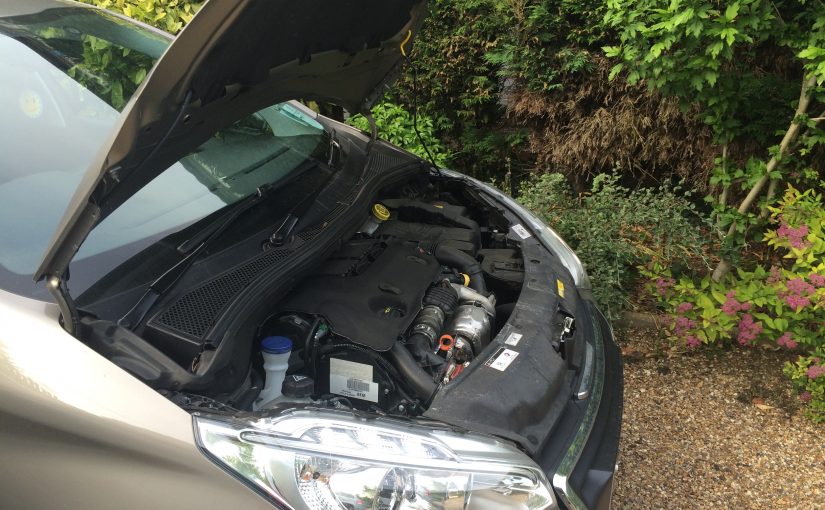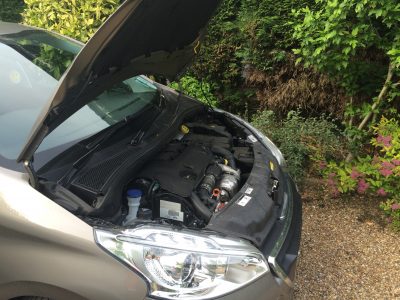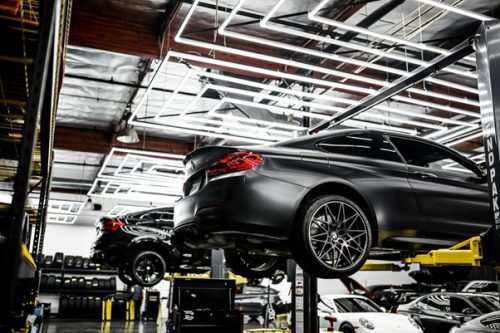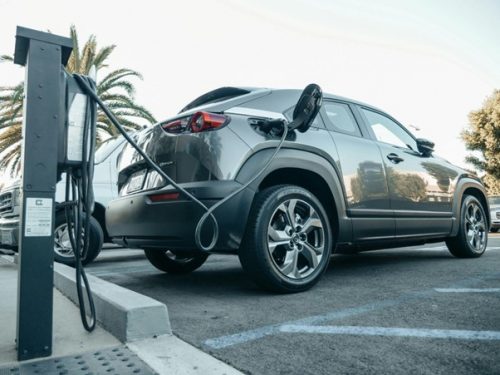
Vehicle Maintenance Tips and Tricks
Posted in: Driving Tips, News.
It doesn’t matter whether you buy your car brand-new off a showroom floor or pre-owned from an individual seller; you’re probably going to want the ride to last for as long as possible. For one, nobody wants to be left stranded on the side of the road with a broken-down vehicle. But that’s what could happen without proper care and maintenance.

With preventative upkeep, significant mechanical failures can usually be kept at bay. So, use these vehicle maintenance tips and tricks. Then, hopefully, you won’t have to deal with high-dollar repairs.
Get a Warranty
If you just recently drove your car off the lot, there’s a good chance that manufacturer warranties cover the powertrain, transmission, and more. As such, if something were to go wrong with one of them, the issues would be resolved for free, providing that the vehicle received maintenance. However, eventually, these safeguards will expire, and when that happens, without taking action, you could be responsible for out-of-pocket costs. That’s why you need to get a used car warranty before the expiration occurs.
According to the Car Expert Group, the average cost of a warranty is around $3,000. After you pay the fee, the plan goes into effect. Then, it depends on the particular stipulations, but you’ll probably need to pay a deductible each time service is required. The amount will vary from one warranty company to the next, but a $100 deductible is fairly standard.
But with the prices of some auto repairs, you’ll be happy only to spend a hundred bucks while someone else floats the rest of the bill. For example, a catalytic converter replacement can run you as much as $1,500 at a repair shop. Meanwhile, if the transmission goes out, it can cost you between $4,000 and $5,000 to fix that. So, obtain an extended car warranty from a dealer or third party and save yourself some money on auto repairs.
Change the Oil Based on the Manufacturer’s Recommendation
Most mechanics and manufacturers recommended completing oil changes on vehicles at 3,000-mile intervals in years past. And that served everyone well for the most part. However, breakthroughs occurred with lubricants from then until now, and today oil changes typically wait until every 5,000 to 7,000 miles. Each manufacturer is different, though. Hence, be sure to look inside your owner’s manual to determine exactly when the right time to have your oil changed is.
Simply knowing when to do the deed isn’t enough.
You must also follow through. That will ensure the oil stays clean and can flow easily throughout the motor, oil filter, oil pump, and other engine parts. To ensure internal engine components are properly lubricated, make it a point to remain on top of oil changes, and perhaps, a breakdown won’t be in your future.
Not to mention that keeping up with a regular oil change schedule keeps your engine safe from damage. This helps keep expensive repairs and replacement at bay.
Check the Tire Tread
Tire tread gets measured in 32nds of an inch. Therefore, as you can imagine, using a measuring tape to get an accurate reading could prove tricky. Thankfully, there is an easier way to tackle this venture, and all you need is a penny. The idea is to stick a penny between the ribs on your tire. If Lincoln’s entire head is showing, that typically indicates it is time for a new tire. But, if most of the former president’s head is covered, you should still be able to get by for a while without purchasing new tires.
It is best to replace tires as soon as possible after problems develop. That is because riding around on a unit with a slice, knot, or shifted belt can be dangerous. It may blow out, cause you to lose control of the vehicle. Then, property damage and injuries can enter the picture. So, perform the penny test monthly to keep an eye on your tire tread, and maybe, that will stop flats and other issues in their tracks.
Replace the Engine Air Filter
Most automakers recommend replacing a vehicle’s air filter every 30,000 to 45,000 miles. Once this piece gets clogged with dirt and debris, that puts a strain on the engine. It can even lead to decreased fuel performance. In other words, your car might be burning through tanks of gas like they’re going out of style. Then, you, in turn, will feel like you have to fill up every time you turn around.
But, changing out the air filter as urged can save you from experiencing such issues. So, don’t neglect this minor task. Instead, consult your owner’s manual to determine when the part should be replaced.
How are the Belts and Hoses?
Periodically, you’ll want to check the belts and hoses under the hood. If the vehicle is old, it will have individual belts for different systems. Therefore, if the power steering belt busts, you may still be able to drive the car. However, new vehicles have serpentine belts, and when they break, everything stops. If any belts are worn and brittle, it is time to replace them.
That’s because if you don’t and the belt snaps on an abandoned road somewhere, you could be left walking to a gas station in the dark for help. Of course, that can be tiring and dangerous.
It is also an excellent idea to keep a regular eye on your car’s different hoses. They carry fluids to various components and keep the vehicle running like a well-oiled machine. When problems originate, they need to be fixed promptly because, if ignored, they will only worsen and leak coolant, brake fluid, or other liquids everywhere.
Low fluid levels might not seem like a very big deal, but they can be. For example, if a car’s antifreeze level disappears, it could run hot. Then, the head gasket might bust, requiring an expensive repair. Or, what about a fuel line issue? A spark may start a fire under the hood if it develops a drip. Thus, take the time to inspect belts and hoses. That will allow you to catch potential dilemmas and fix them before disasters strike.
Have Warning Lights Checked
Modern vehicles are chock full of sensors. The devices are on all sorts of systems and relay messages back to an onboard computer. The computer illuminates dash warning lights when fuses, relays, sensors, and electronic components malfunction. Symptoms will vary, depending on what part is having issues. For instance, your car could be spitting and sputtering. Then again, the engine might turn over but fail to crank.
The list of troubles could go on and on. However, regardless of what’s happening, you’ll need to get a diagnostic scan tool to see what codes are tripped and what to fix if a light on the dashboard turns on. But don’t fret if you do not have access to a unit. You may be able to take your ride to an auto parts store to have it tested for free. Or, if you don’t mind paying a fee, you can take the vehicle to a local mechanic to have them perform the service.
Leaving the situation as it is isn’t ideal. That can cause your car to ride rough and be unreliable. Therefore, look into the matter sooner rather than later. Then, perhaps the issue won’t worsen and short other parts out.
How’s the Spare Tire?
You’ll also need to occasionally check the condition of your spare tire. Firstly, use a tire pressure gauge to see if it is full of air. If it isn’t, there could be a hole somewhere that must be patched. The tread should be examined as well. Plus, you will want to be on the lookout for bald spots, missing chunks, and dry rot. If any of those issues exist, it is likely time to get a new spare tire.
In addition, you’ll want to check the size of the tire and make sure it matches the wheels on the vehicle. If it features different measurements, you might want to think about getting another spare tire that exactly matches the size of the others. Using a spare tire that’s a different size could cause the car to pull to one side as you drive.
Schedule Regular Tune-Ups
Of course, car owners can also leave everything up to the professionals. Normally, maintenance services are scheduled at 60,000 and 90,000 miles. It depends on what your vehicle goes in for, but systems and components shops will examine include:
- Fuel system
- Air conditioning
- Transmission
- Tires
- Brakes
Mechanics can keep these and other items in tip-top condition. Then, owners gain peace of mind, knowing their rides are road-worthy.
Some Final Thoughts
If a person takes good care of a car, it will usually last and serve them well for an extended period. However, to ensure the vehicle remains reliable and trustworthy, its owner must properly maintain and care for it. If your primary objective is to have a long-lasting and dependable car, don’t hesitate to use these maintenance tips.
Tags: Vehicle Maintenance Tips and Tricks












